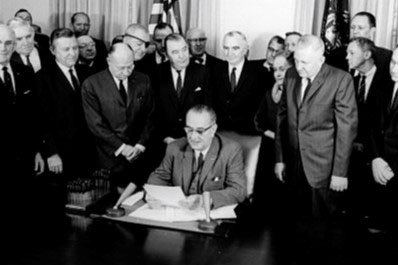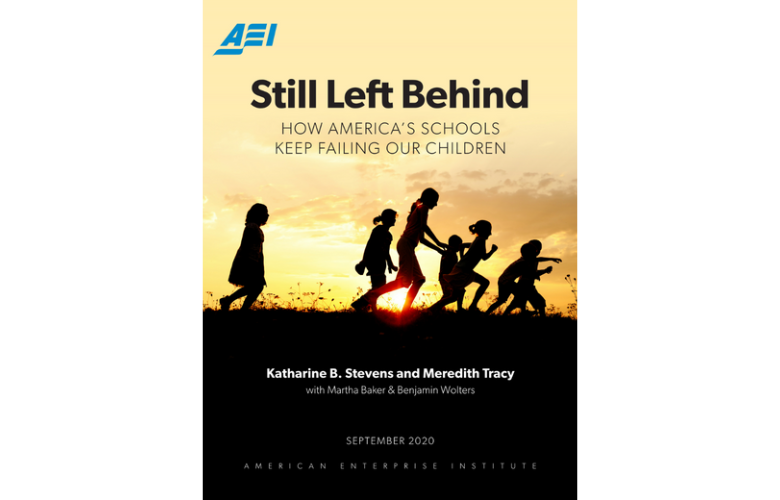We Need a National Tutoring Program to Avert Educational Catastrophe
By Katharine B. Stevens
OP-ED
January 6, 2021
As a third COVID wave sweeps the United States, achievement gaps between higher- and lower-performing students are widening. Children already struggling in school are falling so far behind they may never catch up. A recent investigation estimates that missed instruction for elementary school children could result in 5.53 million years of life lost due to lower life expectancy linked to decreased educational attainment.
Our best chance for averting an educational disaster: launch a national tutoring program.
In fact, the current crisis is even more critical than it seems: long before COVID, the educational performance of disadvantaged children was much worse – and achievement gaps much larger – than most people realize. Despite massive public investment, now at over $700 billion per year, schools have been failing disadvantaged children to a stunning degree for decades.
I’ve published an online map revealing how poorly millions of America’s children were performing just last year. It shows that more than one-third of lower-income eighth graders could not demonstrate even minimum competence in reading and math on the 2019 National Assessment of Education Progress (NAEP), which is administered in all 50 states and the District of Columbia. The achievement gap between lower-income and higher-income eighth graders was enormous.
The map provides state-level data on percentages of lower-income eighth graders who scored below NAEP’s lowest level of Basic in reading and math. That percentage ranged from 33 percent (Idaho) to 52 percent (D.C.) in reading and from 36 percent (Wyoming) to 59 percent (Alabama) in math. In 25 states and D.C., at least 40 percent of lower-income eighth graders scored below Basic in reading. Gaps between percentages of higher- and lower-income students scoring below Basic were in double digits, ranging from 14 to 37 points across states.
How can the same schools that produced this level of failure for years before COVID help children catch up afterwards? They can’t. To prevent a full-scale catastrophe, we must find a new approach – and scaling up a nationwide tutoring program is it.
Launched last month, England’s National Tutoring Programme (NTP) provides a terrific model. The program uses two strategies to help children make up for learning losses during the pandemic, while also providing a longer-term solution to closing the achievement gap. First, it gives schools access to subsidized, high-quality tutoring from a carefully screened list of approved providers who work as “Tuition Partners,” providing individualized instruction to children virtually and in person. Second, it places trained college graduates of all ages as full-time, in-school “Academic Mentors,” providing intensive one-on-one and small-group instruction in schools serving the most disadvantaged children.
The U.S. has abundant resources in place for a similar initiative. America’s private tutoring market, now estimated at around $47 billion a year, includes dozens of well-established online and in-person tutoring programs that could be subsidized to work with disadvantaged children. The highly successful Reading Corps, based in Minnesota, places full-time tutors in low-performing elementary schools in 12 states and D.C. The program’s spinoff, Math Corps, has expanded to five states. This past summer, Tennessee launched a Tennessee Tutoring Corps, recruiting qualified college students to provide summer tutoring to elementary school children. And North Carolina has just launched the NC Education Corps, now training inaugural corps members who will deploy this month.
We could build on these successful efforts by expanding our existing national service programs, AmeriCorps and AmeriCorps Seniors, to fund more tutors across the country. States and localities would design and run programs that meet their needs. In addition to helping children, the initiative would provide jobs for recent college graduates and others struggling to find employment, including retirees who want to go back to work. And it would promote the value of public service as essential to our country’s success.
Throughout the pandemic, higher-income parents have been paying for private tutoring for their kids because they know it’s highly effective. Some large businesses now offer subsidized tutoring to white-collar employees. But for millions of lower-income parents, tutoring is out of reach financially, even as their children fall further behind.
The stakes for children and for the nation are enormous. A 2009 McKinsey study estimated the achievement gap between high- and low-income students costs $400 billion to $670 billion in GDP every year, the “equivalent of a permanent economic recession.” And the impending human wreckage due to COVID is hard to quantify. A national tutoring corps may be our only hope for salvaging the millions of young lives now on the line.
See Also
Op-Ed ~ November 30, 2020
Report ~ September 21, 2020
Blog ~ December 21, 2020




